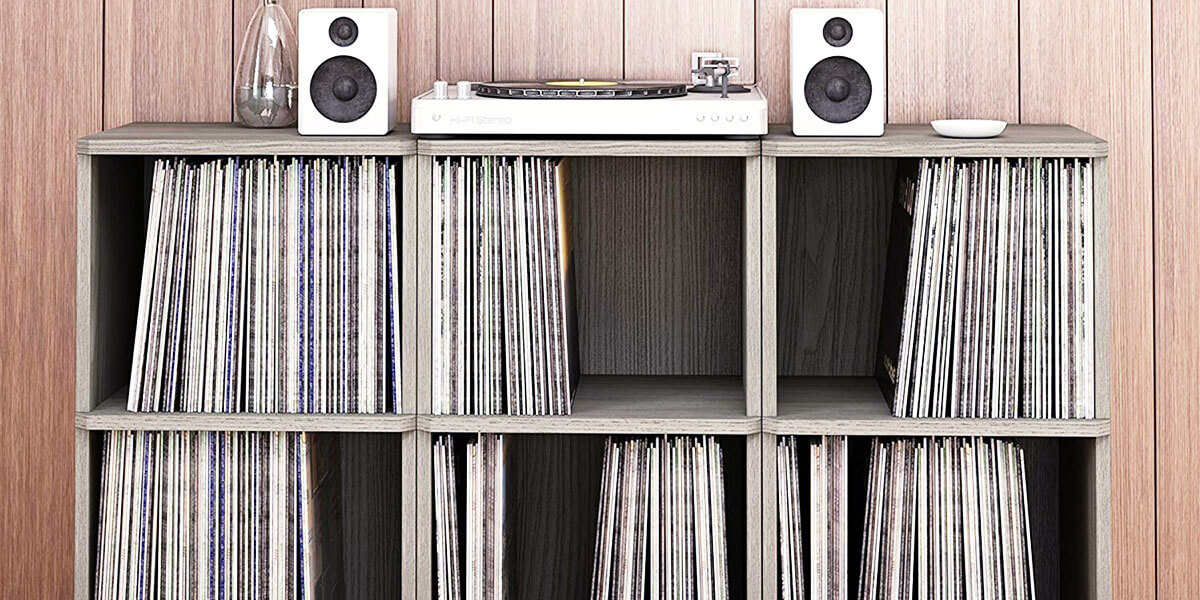In the world of vinyl enthusiasts, the way we store our cherished records can make a significant difference in their longevity and sound quality. A lot of vinyl enthusiasts argue about how to store records flat or upright. Whichever side you’re on, it’s essential to understand the pros and cons to ensure your collection remains pristine. I will uncover for you the best practices for preserving your vinyl treasures.
Storing vinyl records flat
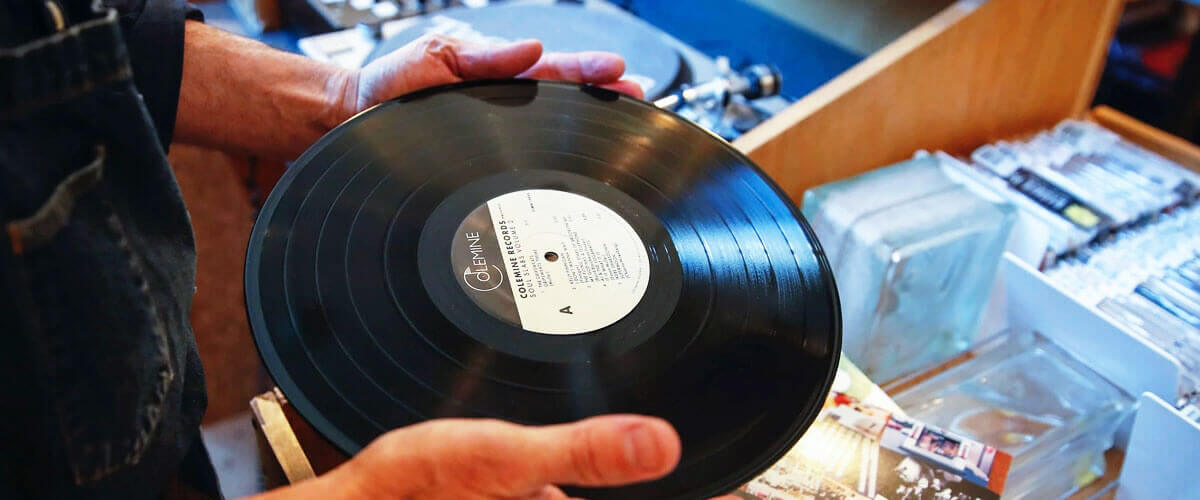
Storing records flat refers to laying vinyl albums horizontally, typically in stacks, one on top of the other. This method of storage has been both advocated for and critiqued by vinyl enthusiasts over the years. Here’s a closer look at the benefits and potential downsides of this storage approach.
Pros of flat storage:
- Have you ever held a warped record? By storing records flat, you can maintain their pristine shape and ensure they play beautifully.
- I’ve found that flat storage reduces the pressure on the grooves. This could mean preserving the rich sound of your favorite tracks for even longer.
- When I store my records flat in a spot shielded from sunlight and with stable temperatures, they seem to stay in impeccable condition.
Cons of flat storage:
- If you’re anything like me with an ever-growing record collection, stacking them can be problematic. The weight might damage the ones at the bottom. Always something to watch out for.
- Trust me, constantly shifting and lifting records isn’t just tedious – it ups the risk of accidental scratches.
- And let’s not forget space. As my collection grew, flat storage began to claim a fair chunk of my room.
In conclusion, while storing vinyl records flat and choosing to stack vinyl records have their advantages, such as reduced risk of warping and minimized groove pressure, this method might not be the best option for long-term storage, especially for extensive collections.
How to store vinyl records flat?
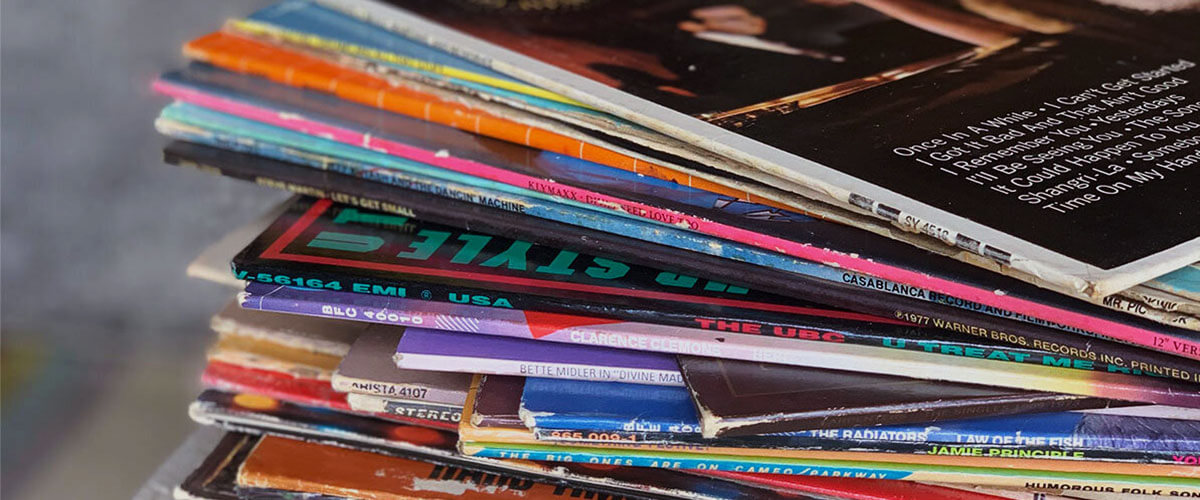
When storing vinyl records flat, ensuring their longevity and sound quality is critical:
- Opt for a stable, even surface in a climate-controlled environment.
- Use specialized flat-bottomed record boxes for optimum protection.
- Consider dedicated storage shelves, allowing each record its own flat space.
- Employ inner sleeves to shield against dust; always position the opening upward.
- Avoid high stacks; excessive weight damages bottom records.
- Explore specialized storage units tailored for vinyls.
Emphasizing stability and even surfaces is paramount when you lay records flat, ensuring the preservation of your cherished vinyl collection.
Storing vinyl records upright
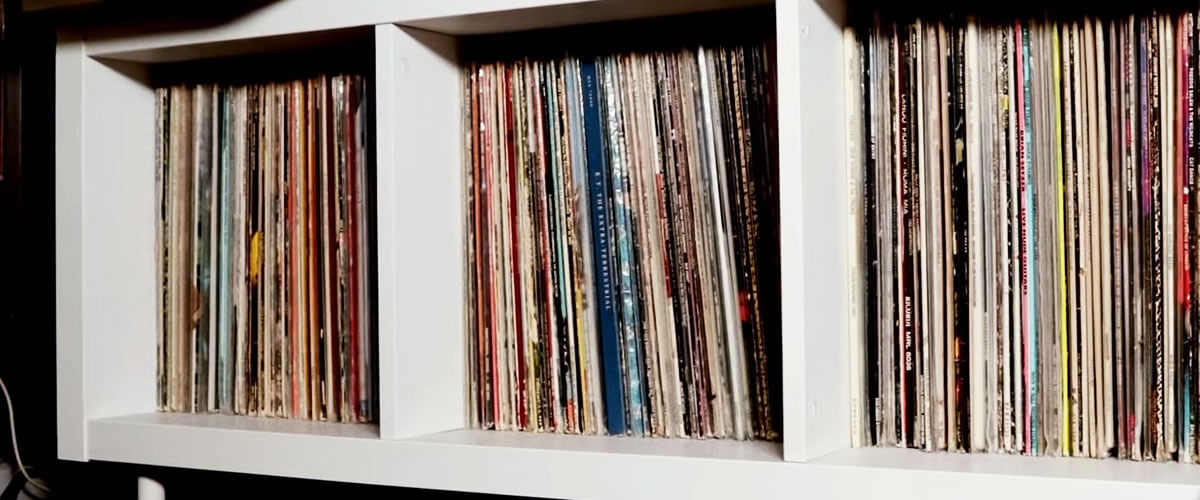
Storing vinyl records vertically, a method that involves placing vinyl records on their edge side by side, is a widely adopted practice among vinyl aficionados. There are distinct reasons for this preference, many tied to spatial efficiency and accessibility.
Pros of upright storage:
- If you’re squeezed for space like many of us, you’ll find that storing records upright can be a real game-changer.
- Remember that rush of finding the exact record you want in a jiffy? Keeping them upright lets you pick and play in no time.
- By setting them vertically, your records don’t press down on each other. They’re less likely to get damaged.
- With this orientation, each record enjoys a little breathing room, staving off moisture and temperature issues.
Cons of upright storage:
- Here’s a pitfall – if not aligned correctly, records can lean and, over time, warp.
- Sliding records frequently? That might wear out their edges.
How to store vinyl records upright?
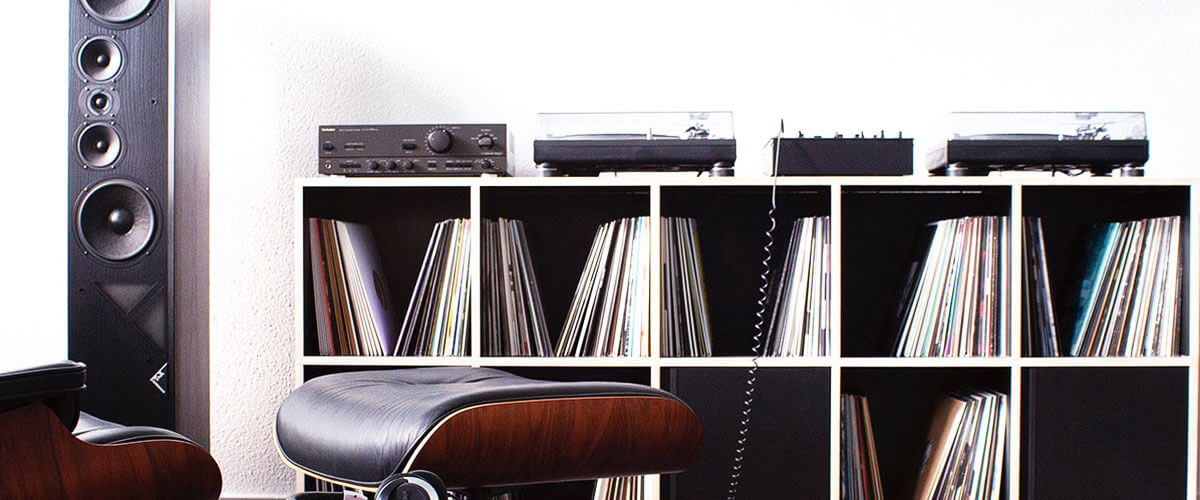
To store vinyl records vertically without risking their integrity:
- Use sturdy shelves or cabinets designed for records.
- Employ record dividers. These can be labeled for easier categorization and also offer added support to prevent leaning.
- If you prefer portability, opt for dedicated vinyl boxes or crates.
- Ensure that the records have some breathing space. Overpacking can exert pressure, increasing the risk of warping.
Factors to consider when choosing the option
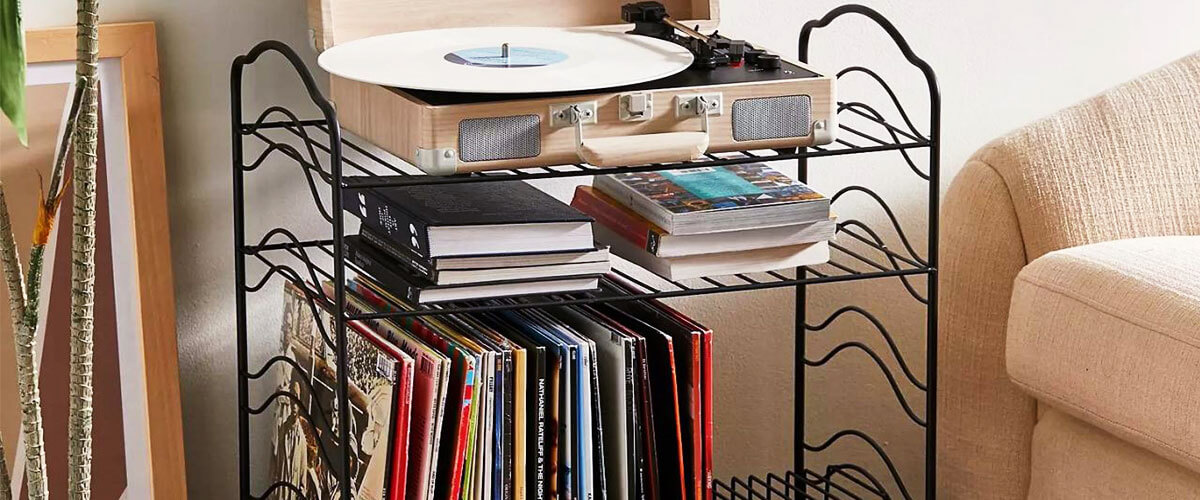
Choosing whether to store records vertically or horizontally for your vinyl collection involves careful consideration of various factors:
- Vertical storage typically maximizes space in smaller areas, while flat storage might require a broader surface area.
- For vast collections, vertical storage offers easier access and categorization.
- If you often listen to your vinyl or frequently shuffle through your collection, upright storage grants quicker access.
- Both temperature and humidity play important roles in vinyl preservation.
FAQ
How to prevent warping in vinyl records, regardless of the storage method?
Preventing warping is essential for vinyl longevity. Regardless of your storage method, always ensure records are stored away from direct sunlight and heat sources. It’s important to maintain a stable temperature and avoid areas with high humidity. For flat storage, rotate the stacks periodically. For upright storage, ensure records stand straight and are not leaning.
Are there any special considerations for long-term vinyl storage?
For long-term storage, consider using polyethylene inner sleeves to reduce static and potential chemical reactions. Store records in a climate-controlled environment, minimizing temperature fluctuations and humidity.
How often should I inspect and clean my vinyl records in storage?
Regular maintenance is vital for preserving sound quality. Inspect your records every 3-6 months. When it comes to cleaning, it depends on usage. If you play a record frequently, consider cleaning it every few plays.

